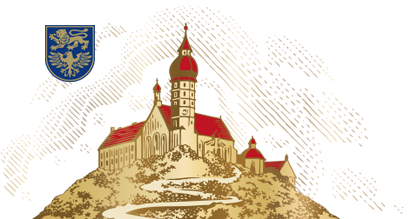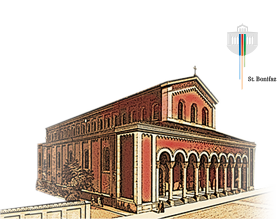Monastery portal
For the monastery, the gate is the most important pathway between the monastery’s interior and exterior.
There is always movement at the gate. Stacks of mail come every day, people ask about church services and events, they seek counsel or a consultation with one of the monks. Today’s secular employees answer countless phone calls and forward them to the monastery or the economic enterprises. Pilgrims and guests coming to live in the monastery for a few days are received here.
The gate is a pathway. It is where enquiries are answered and information is channelled. By mediating between the interior and exterior of the monastery, it also protects the monastic community. The Rule of Saint Benedict underscores the important of the gate for the monastery as a whole by dedicating a chapter to the porter:
Chapter 66 – The porter of the monastery:
“Let there be stationed at the monastery gate a wise and elderly monk who knows how to receive an answer and to give one and whose ripeness of years does not suffer him to wander about. This porter ought to have his cell close to the gate so that those who come may always find someone there from whom they can get an answer. And as soon as anyone shall have knocked, or any beggar have called out, let him answer: “Thanks be to God” or bid him Godspeed; and with the gentleness of the God-fearing and with fervent charity let him make speed to answer. And let the porter, if he need help, receive it from a junior brother.”
Abbot Johannes writes about the gate in his book “Wohne bei Dir selbst”: “The gate in the truest sense of the word assumes a ‘key role’ for monastic life as a whole. Ultimately it refers to the keys that every monk carries. They give him responsibility for himself, for others and for the various areas he can unlock or lock. Both can be beneficial and both can lead to harm. It is therefore important to always recall the power that a person is given with this, and how he as porter would himself deal with these numerous functions.”




